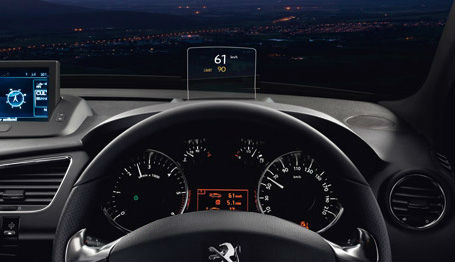Car Heads-Up Display
While driving, the driver has to monitor both their environment and the vehicle information. As a result, their eyes always go back and forth between the environment and the instrument panels, which, in turn, can cause fatigue. The Head-Up Display interface helps avoid this problem by allowing the driver to have access to the driving information in their field of view.
I was the HMI designer in charge of this module. My task was to participate in its design and support its development.
*The images above are examples of similar systems and are not representative of the HUD I worked on.
What follows is an example of my work on the HUD module.
REQUESt
I was asked to recommend which type and location of HUD controls are the most usable.
CONSTRAINTS
To adjust the HUD, the driver has to be in the driving position. While driving, the driver can change their position in the seat many times, so they will often need to adjust the HUD. Controls have to be easy to locate in the cockpit (especially for the learning phase) and easy to reach and use while driving. Moreover, they have to require minimal cognitive and manual loads.
METHODS & results
At first, I made a benchmark of HUD controls and had meetings with different team members to have their expert opinions. After analyzing the collected data, I gathered it in a document. Then I analyzed and ranked different solutions based on heuristic criteria. Two solutions stood out from the rest.
I decided to conduct user tests to complete my document with user data.
The results allowed me to determine which solution was the most optimal one for the users. I presented it to the client.

